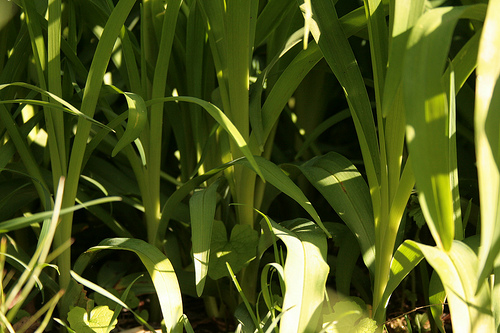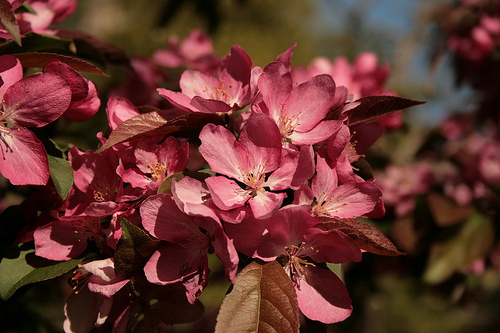 |
Overview |

Ecophilosophy as a Gaian Methodology
Overview
Ecophilosophy unites philosophy and ecology while simultaneously positing that humans are an intrinsic part of, and inseparable from, nature. Deep ecology as an ecophilosophy breaks us out of the anthropocentric boundaries imposed by shallow ecological thought which emphasize concern for the environment only insofar as it addresses ways that humans are affected by nature.
Ecophilosophy as a Gaian Methodology: Roots Stem and Leaf Flower Seeds Annotated Bibliography Resources |
|
Roots of Ecophilosophy as Method |

Ecophilosophy is a union of philosophy and ecology. Arne Naess, founder of deep ecology, felt that philosophy would provide the wisdom to guide the actions necessary to prevent ecocatastrophe. Ecophilosophy, as envisioned by Naess and described by Rothenberg, provides an “ontology which posits humanity as inseparable from nature” (in Naess, 1986, p. 2). Once we begin approaching our lives from this perspective we are no longer able to cause harm to nature because in doing so we simultaneously harm ourselves. Ecophilosophy uses basic ecological concepts to better define the place the human species holds within nature. Ecology and philosophy combined can help guide “the process of working out a total view” (Rothenberg in Naess, 1986, p. 3).
In conducting qualitative research, certain philosophical assumptions are inherent or explicitly addressed by the researcher (Creswell, 2007, p. 16). These assumptions provide perspective for the ontological, epistemological, axiological, rhetorical, and methodological directions of the research itself. An ecophilosophical, or deep ecology, stance is thus reflected by a non-anthropocentric approach to research. Ontologically speaking, for the deep ecologist, the nature of reality (or the reality of nature) is that humans are inseparable from nature.
Naess’ deep ecology platform is a flower with 8 petals:
- The flourishing of life on Earth, human and non-human, has intrinsic value. Non-human life has intrinsic value independent of any usefulness for human purposes.
- Rich, diverse life forms on Earth contribute to the flourishing of life on Earth, both human and non-human.
- Humans have no right to reduce this richness and diversity except to satisfy vital needs.
- Human interference with the non-human world is currently excessive, and is only getting worse.
- A decrease in the human population is essential for the flourishing of human and non-human life.
- Policies must be changed in order to make significant changes of life conditions for the better. These affect basic economic, technological, and ideological structures.
- The ideological change is mainly that of appreciating life quality rather than adhering to a high standard of living. There will be a profound awareness of the difference between big and great.
- Those who subscribe to the previous points have an obligation directly or indirectly to participate in the attempt to implement the necessary changes (Naess, 1989, p. 29).
|
|
|
Stem and Leaf of Ecophilosophy as Method |

Ecophilosophy can support the growth of a deep ecological philosophy, as well as the expansion of a deep ecology movement actively working toward change (Rothenberg in Naess, 1986, p. 4). A deep ecology platform developed by Naess provides 8 points that can help guide people who realize that the ecological crisis we face cannot be solved by any quick technological fix. Naess’ 8 point platform helps people to come together to work toward change without overshadowing individuals’ differences in perspective or ways in reaching agreements (Rothenberg in Naess, 1989, p. 4). In other words, the platform provides an agreeable starting point from which groups can rally around their common, shared beliefs. The ability to modify the platform, however, allows for diversity in direction and action. The platform thus facilitates the combination of two major ecological themes, unity and diversity, when taking a philosophical approach to social action.
Research conducted using an ecophilosophical approach might rely on Naess’ platform, or a similarly constructed platform, to define specific values and their role in the shaping the research. The Ecosophy T platform's eight factors might also provide a research framework, offering critical criteria informing a problematization of subject-object positioning in research. Dolores LaChapelle, for example, in Sacred Land, Sacred Sex: Rapture of the Deep offers several applications of embedded deep ecological approaches to, for example, empower the researcher to embed research inside the wheel of the seasons, inside mandalic or larger-scale beings. LaChapelle (1995) articulates how rituals and seasonal festivals periodically revived the topocasm. She draws on Gaster's concept of topocasm as "the world order of a particular place – the entire complex of any given locality conceived as a living organism – not just the human community but the total community—the plants, animals and soils of the place" (p. 59), including its current manifestation in the past-future continuum. She argues that time and ritual as embodied respect and connection develop a living sense of place – they are patterns that connect and offer a way of finding ourselves within nature as a key to sustainable culture (p. 62). Thus deep ecological concepts can thoroughly re-emplace the researcher from an implicit separate-than "objectivity" and re-embed the research into actions of regeneration, which relates to the use of the Gaia Hypothesis as research method.
|
|
|
Flowering of Ecophilosophy as Method |

Shallow ecology favors an anthropocentric view of the world, where humans are apart from nature. With deep ecology, on the other hand, we can blossom as an intrinsic part of an interconnected and interdependent living network. As Capra notes, deep ecology is a paradigm that emphasizes the whole rather than the parts (in Sessions, 1995, p. 21). Naess’ deep ecology platform permits a shift in perspective away from the shallow, anthropocentric view; the platform encourages and facilitates the development of a “non-anthropocentric theory of value, a theory that would confer inherent value on non-human forms of life” (Capra in Sessions, 1995, p.20). Deep ecology thinking is a bloom in consciousness that acknowledges intrinsic value in the natural world, places an emphasis on the health of the natural world as of primary importance, and understands that this emphasis on a healthy natural world serves humans just as well.
Deep ecology as a paradigm for informing inquiry reminds the researcher continually to consider the whole as more than simply the sum of the parts. In addition, ecophilosophical inquiry based on the deep ecology platform posited by Naess contains and inherent advocacy-oriented stance. The path of ecophilosophical inquiry should further positive change; in fact research from a ecophilosophical perspective is obligated (as per point 8 above) to advocate positive change.
Naess’ deep ecology platform is a flower with 8 petals
|
|
|
Seeds of Ecophilosophy as Method |

Ecophilosophy is the study of problems that are common to both ecology and philosophy. Ecophilosophy takes the ecological and philosophical approach that humans are not separate from nature.
Ecosophy is one’s own personal philosophy as applied to answering questions about oneself and nature (Naess, 1989, p. 36). Comparing these two concepts, ecophilosophy is a field of study whereas ecosophy is an individual’s position or a point of view.
Biosophy, introduced by Peter Wessl Zapaffe, predates ecosophy and makes a connection between the biological place of humans and philosophy. Biosophy sees man as tragic because “he has learned enough about the Earth to realise [sic] the Earth would be better off without the presence of humankind” (Naess, 1989, p. 37 footnote).
Ecologism, which concerned Naess as an overgeneralization, is a view of ecology as a universal science; it is the “excessive universalisation or generalisation of ecological concepts and theories” (Naess, 1989, p. 39).
|
|
|
|
|
 |
 |
|
Gaian Methodologies - A Convergence of Sensuous Earth

Gaian Methodologies Team
The main resources on this site include how the flower petals of sources and methods grow together to compose the flowering of Gaian methods and methodologies. We include essays and bibliographies to nurture... More…

Prescott College PhD in Sustainability Education
Prescott College offers a Doctor of Philosophy (Ph.D.) in Education with a concentration in Sustainability Education. This low-residency, doctoral program combines expansive interdisciplinary inquiry with intense individual research and practice, and follows a cohort-based learning model...More… |
|
|
 |
|
|